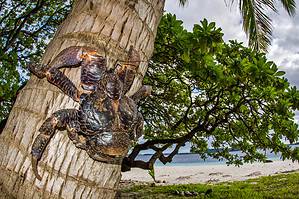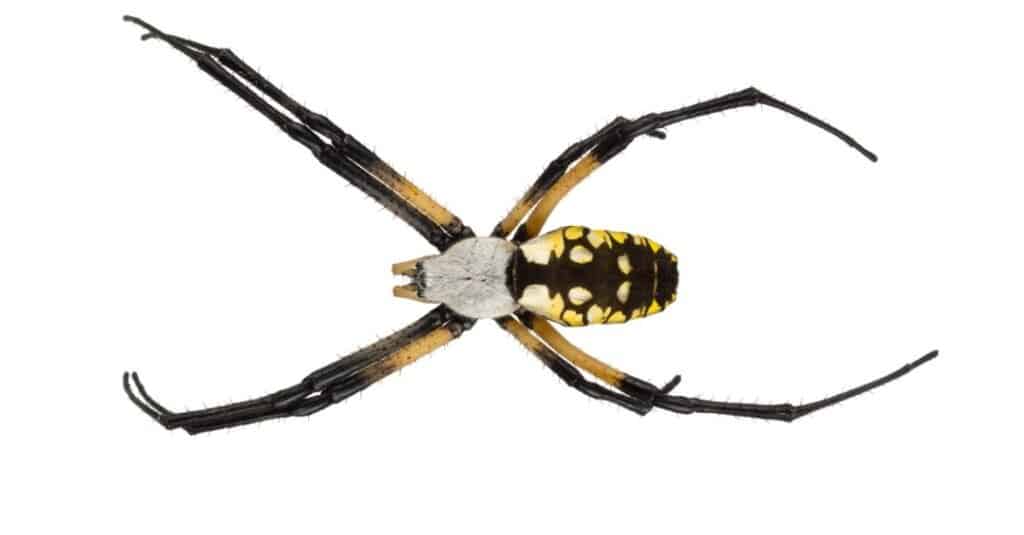
Isolated black and yellow garden spider.
©iStock.com/DianaLynne
Garden spiders originated in North America and can be found all over the U.S. They can also be found in Central America, as well as in the southern portions of Canada. There is no escaping these black-and-yellow spiders and their massive, circular webs, especially once maturity occurs in late summer. Keep reading to learn whether garden spiders are poisonous or dangerous, and what to do should you come across one.
Are Garden Spiders Poisonous?
Garden spiders are not poisonous (although the correct terminology is actually “venomous“). Their bite is harmless to people and said to be less painful than a wasp or bee sting.
Here are some tips on how to treat a nonvenomous spider bite at home:
- Prevent infection by washing the affected area thoroughly with soap and water.
- Alternate applying and removing an ice pack from the bite every 10 minutes.
- Swelling can be reduced by elevating the affected area.
- Benadryl (Diphenhydramine) is a good antihistamine for itching.
- If blisters form, treat the area with antibiotic ointment.
You should consult a doctor if you have symptoms of a spider bite or if they don’t go away after a few days. When bitten by one of the following species, seek immediate medical assistance:
- Black widow
- Brown recluse
- Brazilian wandering spider
- Tarantula
- Hobo spider
Are Garden Spiders Dangerous?
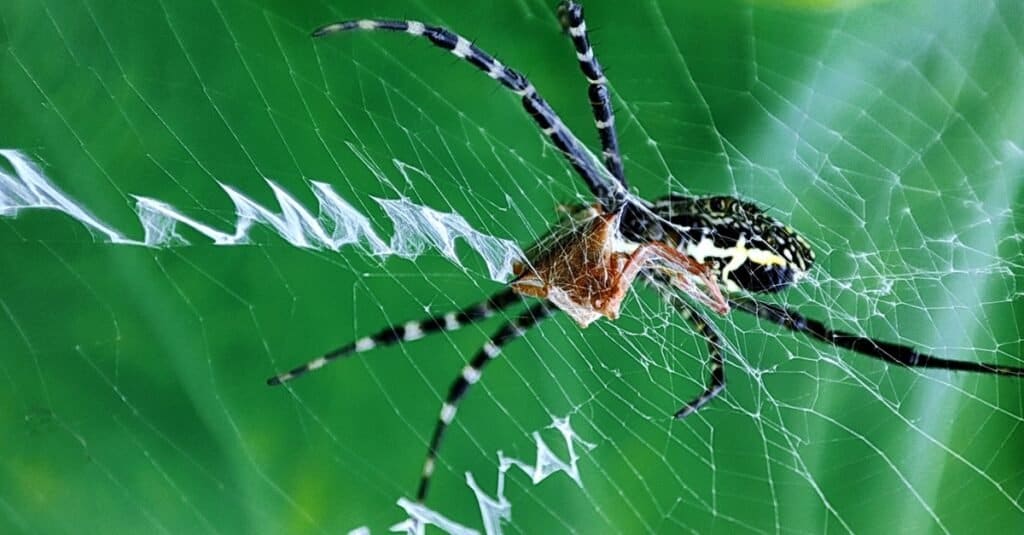
Garden spiders are not dangerous, but they bite when threatened.
©iStock.com/Utpal Biswas
Although their huge webs and adult size give them a threatening look, garden spiders are not dangerous. They bite only if threatened, captured, or stomped on. Their venom induces redness and swelling at the bite site, which may feel like a bee sting with mild irritation.
Yellow garden spiders, like all spiders, will not intentionally attack humans. The garden spider, like thousands of other spider species found in yards and gardens across the U.S., is useful. It eats bees, grasshoppers, moths, beetles, wasps, and any other flying insect that gets caught in its orb web. It’s best to simply avoid disturbing them and let them do their thing.
Other Types of Garden Spiders
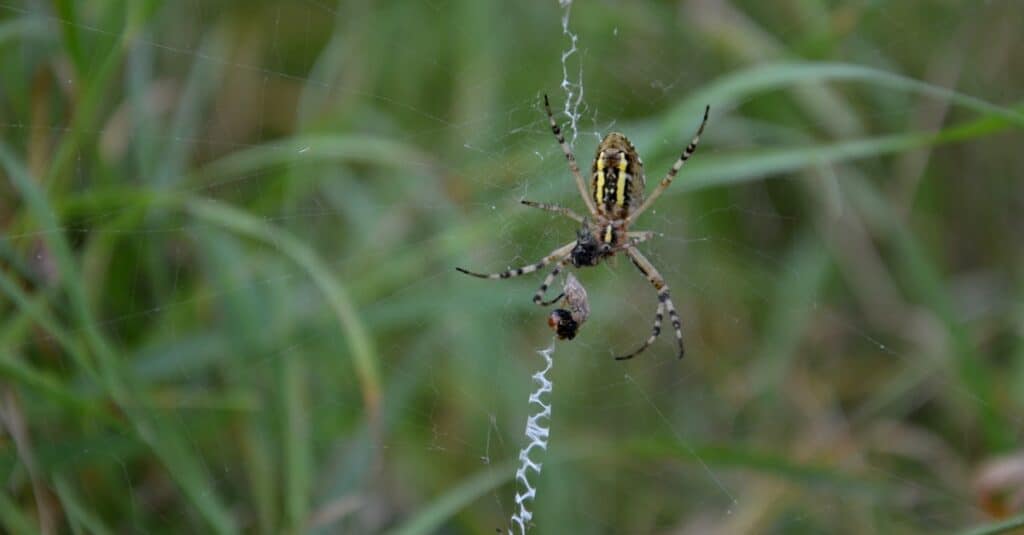
Writing spiders spin their webs.
©Beekeepx/Shutterstock.com
While the yellow garden spider is the most common garden spider in the U.S., there are other “garden” spiders known also as cursorial, or hunting spiders. For example, crab spiders are a species of non-web-spinning hunting spiders. In the garden you may also find, jumping spiders, wolf spiders wandering around looking for prey.
Give your garden spiders permission to do their part. They are vital in maintaining a healthy garden environment. Let them work while you do yours, and you’ll both benefit!
What Does a Garden Spider Look Like?
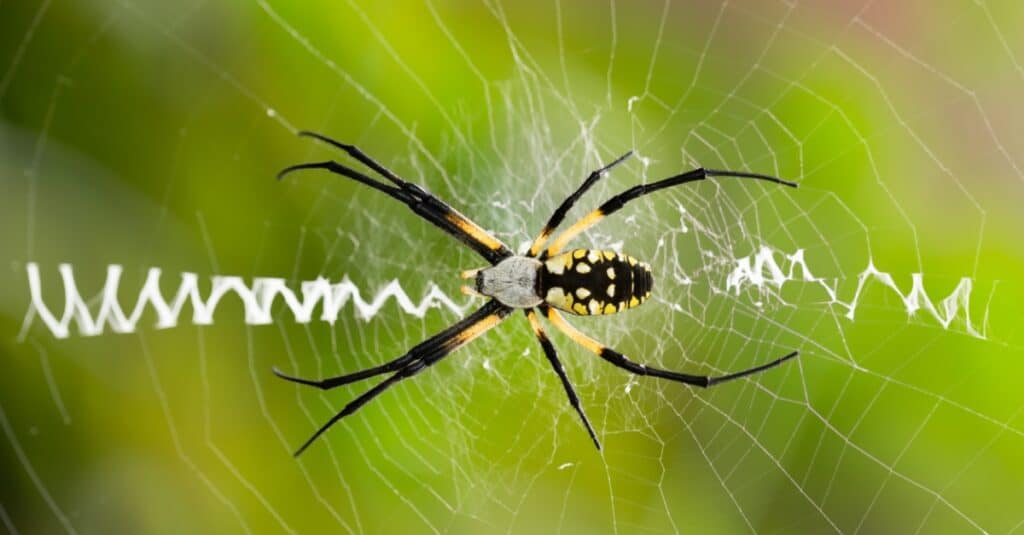
Writing spiders spin a unique, zigzag web.
©iStock.com/DianaLynne
If you look closely, you’ll see that the common yellow garden spider (Argiope aurantia), also known as the corn spider, banded garden spider, or writing spider, is quite lovely. The females have a striking black and yellow abdomen, and eight black legs with red or yellow stripes. Females have legs that can measure up to 3 inches long when they’re mature. The male is not as flashy or massive as the female garden spider.
How Long Does a Garden Spider Live?
The average lifespan of a garden spider is one year. After mating, females typically perish in the first freeze of the season. Females may live for several years if temperatures don’t interfere, while males normally die soon after mating.
Garden spiders breed once or twice a year. After mating, the female lays thousands of brown silk-covered eggs. The eggs hatch in the spring or fall, and the baby garden spiders either stay local or get blown away by the wind.
Garden Spider Web Characteristics
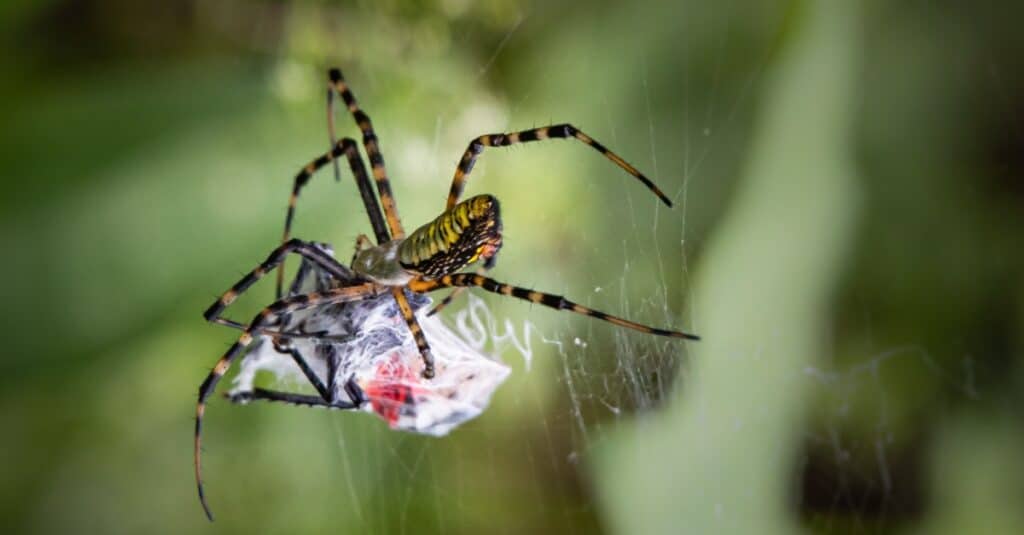
Yellow garden spiders are known for their interesting webs.
©cwieders/Shutterstock.com
Yellow garden spiders are famed for their elaborate webs. The webs are up to two feet across and round. They have the typical spiral rings and radial lines of a spider web which gives them their nickname, writing spider. Female garden spiders weave larger webs than males. The spider will typically sit in the center of the web, waiting for prey to fly into it. Garden spiders utilize the same web for months, repairing it each night. They may build new webs more frequently if they relocate or if the old one breaks.
Despite their intimidating look, black-and-yellow garden spiders are perfectly safe and even beneficial to your garden’s ecosystem. Bite reactions are comparable to those of a bee sting, with some swelling and pain.
The photo featured at the top of this post is © iStock.com/Utpal Biswas
Thank you for reading! Have some feedback for us? Contact the AZ Animals editorial team.



